While the COVID-19 pandemic spelled doom for most arts events, Arts in Foggy Bottom didn’t give up on its exhibit. Instead, the creative team wove the pandemic into the fabric of the show.
The seventh outdoor sculpture exhibit “Human Nature” was meant to debut in 2020, but pandemic restrictions meant canceling the show became a very real possibility, said Co-Director Peter Maye.
Remarkably, Curator Kayleigh Bryant-Greenwell said the pandemic emerged as an “opportunity for an organic show,” which granted creatives the chance to think of different ways to craft a “pandemic friendly exhibition.”
The creative team “really had to pivot,” said public relations manager Elizabeth Stein. “The artists themselves weren’t comfortable participating.”
The show created jobs
Maye proposed self-guided tours take the place of the scheduled group tours previously led by the curator and participating artists. He suggested placing QR codes at each sculpture, containing a recording of the artist describing their work.
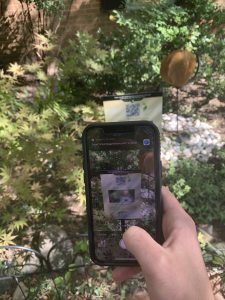
The creative team immediately began the search for a video director as well as a storyteller to interview every artist. In a way, the pandemic fashioned an opening to hire more creatives, said Bryant-Greenwell, head of Public Programs with Smithsonian American Art Museum and the Renwick Gallery.
Creatives were amongst those most affected by the pandemic in the country’s workforce with 63% of artists facing unemployment during the height of the pandemic in 2020, according to Americans for the Arts.
“Having the opportunity to hire more creatives is unique and great,” Bryant-Greenwell said.
The display made art accessible
The QR codes also led to a “more dynamic delivery” of information, Stein said. It exposed residents to “pieces of information they want to hear,” since the video recordings gave artists the ability to elaborate on their work and why they use certain materials.

The community was able to experience culture in a safe way when most arts events were canceled, she added.
Artist Jerry Truong was originally excited about guided tours, especially leading one, but said he likes how the show worked out. The QR codes let residents and visitors spontaneously learn about the art, unlike previous years where scheduled tours were the norm.
“It is safer and more accessible,” he said.
However, J. Ford Huffman, a longtime resident and sculpture host, questioned the accessibility of the show’s new format. “The pandemic is on people’s minds and the solution is very creative, but it is important to bear in mind that not everyone carries a cell phone.”
A second-time host, Huffman said he misses the groups of people passing by his home and hopes for tours in the future. “It’s always nice to hear their voices discussing the artwork.”
“Human Nature” gained importance
The theme originally took inspiration from the Trump administration stripping environmental protections as well as the Australian wildfires, Bryant-Greenwell said. “It seemed pertinent to talk about human responsibility.”
But the concept of “Human Nature” became increasingly significant in 2021 due to the global COVID-19 pandemic. Bryant-Greenwell referenced scientists’ discussions on how humans have encroached on habitats where these viruses thrive, enabling the spread of COVID-19.
Maye said he can’t think of anything more relevant to the interplay between humans and nature than the virus. “We don’t have that much power,” he said, “and it affected the show 100%.”
Truong even used the pandemic-induced delay to make an entirely different sculpture from the one he had pitched to Bryant-Greenwell in 2019.
Click above for insight into the process behind Truong’s sculpture. (Arts in Foggy Bottom)
“After the pandemic and election, I had a whole different idea that is truer to my interests,” he said.
Truong’s sculpture on 25th St. consists of five transparent signs comprised of words from the American Pledge of Allegiance. “The thing about art is it sometimes struggles to deal with political issues, like the tensions that arose from the pandemic,” he said.
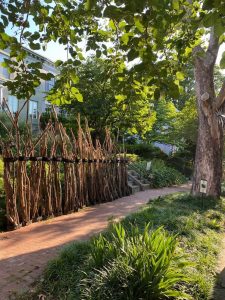
Bryant-Greenwell said the entire show became a response to the pandemic. “Look at the works, titles, and think differently about what it means.”
Artist Stephanie Garon’s sculpture of a bundles of sticks reflects the burden of women’s roles given the environmental impact. Women are often the caregivers, so access to things like clean water are issues women must contend with, she said.
“Women and girls are most vulnerable in crises like these.”
The community and the exhibit
Although the community could not gather for this year’s exhibition, residents were still willing to host sculptures.
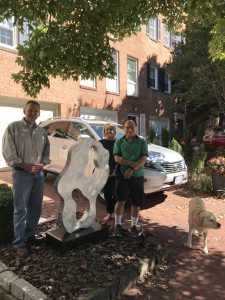
Residents were supportive of the show and very moved by it, Bryant-Greenwell said. One couple she spoke with shared that political action is very near to them, so they felt personally connected to the theme.
Sculpture hosts Shirley and Scott Wayne said the theme was more important than ever, and that the exhibition “is a part of the neighborhood.”
From the start, Maye said the creative team thought “Human Nature” was a great fit for what the world is experiencing.
“Giving back is part of being human,” said Maye. “We gave our community and all of Washington an opportunity to see art that is accessible to everyone.”


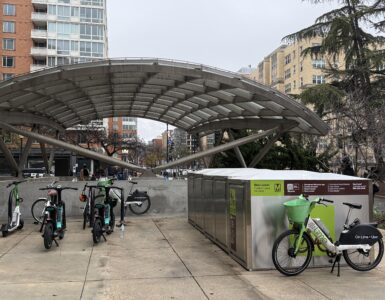
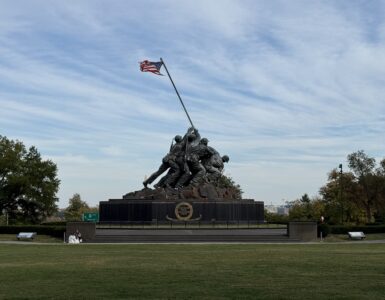
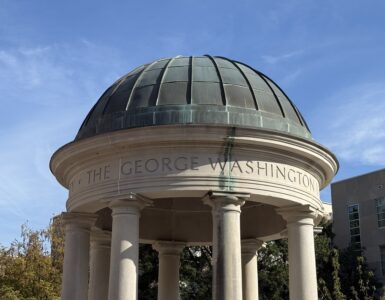










Add comment